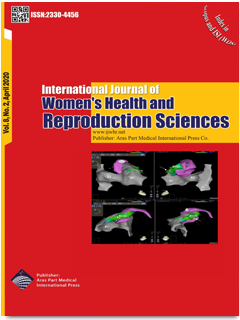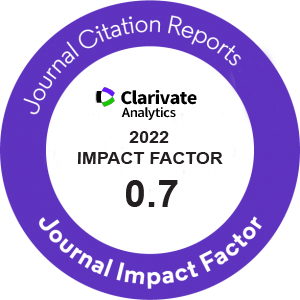| Original Article | |
| Relationship of Vitamin D Serum Level With Intrauterine Growth Retardation in Pregnant Women | |
| Shohreh Alimohamadi1, Farzaneh Esna-Ashari1, Rezvaneh Sadat Beheshti Rooy2 | |
| 1Faculty of Medicine, Hamadan University of Medical Sciences, Hamadan, Iran 2Department of Obstetrics and Gynecology, School of Medicine, Hamadan University of Medical Sciences, Hamadan, Iran |
|
|
IJWHR 2020; 8: 221-226 DOI: 10.15296/ijwhr.2020.35 Viewed : 2267 times Downloaded : 3060 times. Keywords : Vitamin D, Intrauterine growth retardation, Pregnancy, Hamadan |
|
| Full Text(PDF) | Related Articles | |
| Abstract | |
Objectives: Intrauterine growth retardation (IUGR) is a major problem in midwifery medicine for which no effective treatment has been established. This problem has been associated with significant morbidity and mortality, as well as perinatal mortality. IUGR could be prevented when the treatment is administered before the occurance of irreversible changes. Hence appropriate methods for early detection and successful treatment deem necessary. The purpose of this study was to investigate the relationship of vitamin D serum level with IUGR in pregnant women. Materials and Methods: This nested case-control study was conducted on pregnant women who had referred to Fatemieh hospital during 2016. Each of case and control groups included 130 pregnant women. Serum levels of vitamin D were tested in the blood samples obtained from the participants. At the end of the study, all data were analyzed in SPSS software version 16, and ?2, Fisher exact and t tests were utilized for data analyses. Level of 0.05 was considered statistically significant. Results: Our results showed that the average age, body mass index at the beginning of the pregnancy, blood group, employment status, and education level were not significantly different between the two groups. Moreover, average serum levels of vitamin D were about 14.74 ng/L and 25.34 ng/L in the case and control groups, respectively. In those with vitamin D deficiency, the chance of IUGR was higher compared to those who had sufficient levels of vitamin D (6.27 times). Therefore, women who had vitamin D deficiency, had almost 6 times more chance of IUGR incidence compared to the women with adequate levels of vitamin D (P < 0.05). Conclusions: The results verified that serum levels of vitamin D can affect the risk of IUGR; therefore, the incidence of IUGR in babies whose mothers have enough vitamin D level during pregnancy is lower than that in other babies. |
Cite By, Google Scholar
PubMed
Online Submission System
 IJWHR ENDNOTE ® Style
IJWHR ENDNOTE ® Style
 Tutorials
Tutorials
 Publication Charge
Women's Reproductive Health Research Center
About Journal
Publication Charge
Women's Reproductive Health Research Center
About Journal
Aras Part Medical International Press Editor-in-Chief
Arash Khaki
Mertihan Kurdoglu Deputy Editor
Zafer Akan























